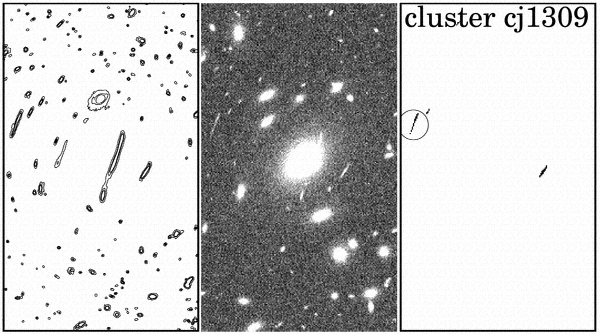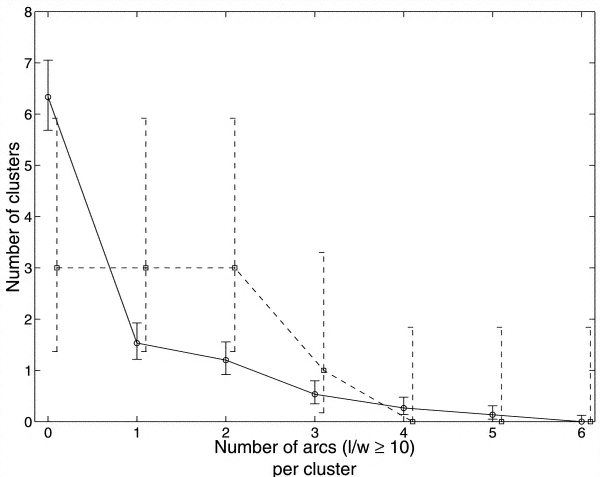
Assaf Horesh Gravitational Lensing Page
The Lensed Arc Production Efficiency of Galaxy Clusters: A Comparison of Matched Observed and Simulated Samples
Authors: Assaf Horesh, Eran O. Ofek, Dan Maoz, Matthias Bartelmann, Massimo Meneghetti, Hans-Walter Rix
We compare the statistical properties of giant gravitationally lensed arcs produced in matched simulated and observed cluster samples. The observed sample consists of 10 X-ray selected clusters at redshifts z ~ 0.2 imaged with HST by Smith et al. The simulated dataset is produced by lensing the Hubble Deep Field, which serves as a background source image, with 150 realizations (different projections and shifts) of five simulated z = 0.2 clusters from a LambdaCDM N-body simulation. The real and simulated clusters have similar masses, the real photometric redshift is used for each background source, and all the observational effects influencing arc detection in the real dataset, including light from cluster galaxies, are simulated in the artificial dataset. We develop, and apply to both datasets, an objective automatic arc-finding algorithm. We find consistent arc statistics in the real and in the simulated sample, with an average of ~ 1 detected giant (length to width ratio >= 10) arc per cluster and ~ 0.2 giant luminous (R<22.3 mag) arc per cluster. Thus, taking into account a realistic source population and observational effects, the clusters predicted by LambdaCDM have the same arc-production efficiency as the observed clusters. If, as suggested by other studies, there is a discrepancy between the predicted and the observed total number of arcs on the sky, it must be the result of differences between the redshift dependent cluster mass functions, and not due to differences in the lensing efficiency of the most massive clusters.
 | An example of a simulated lensed image. Left panel is a counter image of the lensed background only, without observational effect. Middle panel is the final image which includes observational effects such as cluster galaxy light, background and photon noise. Right panel is our arcfinder detection results. |
 | The lensed arc distribution. Solid like is the distribution of our simulated cluster sample. and dashed line is the distribution of the observed cluster sample. |
Contact Information:
Address:
Department of Astronomy and Astrophysics, Tel Aviv University, 69978 Tel
Aviv, Israel
E-Mail: assafh@wise.tau.ac.il
Phone:
+972-3-6405121
Fax: +972-3-6408179